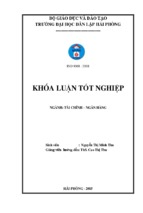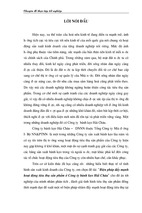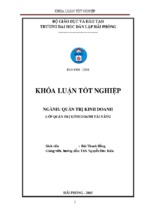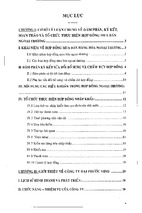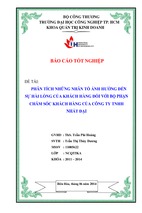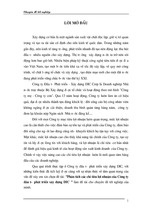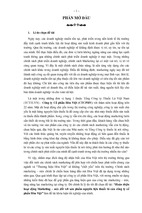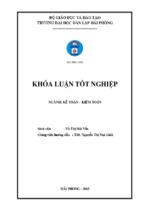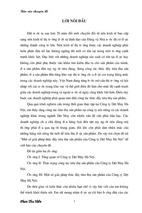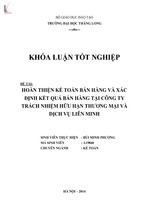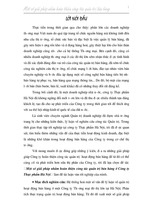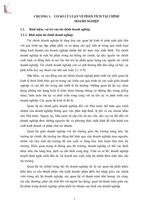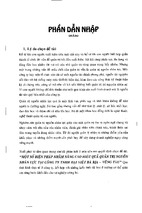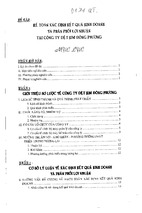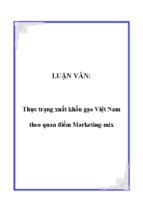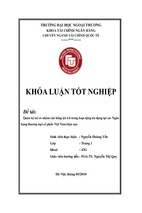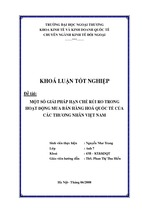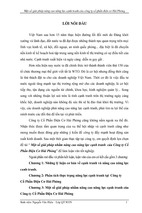Yugoslav Journal of Operations Research
23 (2013), Number 1, 129-135
DOI: 10.2298/YJOR120127021L
A DEMAND INDEPENDENT INVENTORY MODEL
Jennifer LIN
Department of Transportation Logistics & Marketing Management,
Toko University, Taiwan, R.O.C.
[email protected]
Henry CHAO, Peterson JULIAN
Department of Traffic Science, Central Police University, Taiwan, R.O.C.
[email protected];
[email protected]
Received: January 2012 / Accepted: September 2012
Abstract: This paper is an extension of Deng et al. (2007) that was published in the
European Journal of Operational Research. We have generalized their model from ramp
type demand to arbitrary positive demand while theoretically discovering an important
phenomenon: the optimal solution is actually independent of the demand as pointed out
by Wou (2010), Hung (2011) and Lin (2011). We extend their inventory models in
which the deteriorated rate is any non-negative function and backlog rate is inversely
linearly related to the waiting time. Our findings will provide a new inventory system to
help decision makers decide the optimal ordering quantity and replenishment policy.
Keywords: Inventory model, Deteriorating item, Partially backlogged.
MSC: 90B05.
1. INTRODUCTION
This paper investigates an inventory model with stock at the beginning and
shortages allowed, but then partially backlogged. In the entire time horizon, there is only
one order placed at the beginning and backorders are filled at the end. This kind of
inventory model was first proposed by Hill [4], and then further investigated by Mandal
and Pal [11], Wu and Ouyang [15], and Deng et al. [3], Skouri et al. [10], in which the
demand is ramp type demand. Moreover, we also improve inventory models of Wou
[12], Yang et al. [19], Hung [5], and Lin [8] with a more general deterioration rate,
backordered rate, and set up cost. Deng [2] improved Mandal and Pal [11] and Wu et al.
J. Lin, H. Chao, and P. Julian / A Demand Independent Inventory Model
130
[13] to provide a more complete solution procedure. According to Mandal and Pal [11],
Wu and Ouyang [15], and Deng et al. [3], Wou [12] studied the inventory models from a
ramp type demand to any nonnegative function. He provided an explanation, from
managerial point of view, of deriving the optimal solution without constructing the
objective function, which dramatically simplifies the solution structure. Based on the
inventory model of Mandal and Pal [11], Wu and Ouyang [15] and Wu [14], Yang et al.
[19] developed an inventory model in which the demand is extended from a ramp type
demand to positive demand, showing that the optimal solution is independent of the
demand type. Owing to Mandal and Pal [11], Wu and Ouyang [15], Deng et al. [3], and
Skouri et al. [10], Hung [5] revised their models from special ramp type demand to
generalized nonnegative function, where the deteriorated rate is any nonnegative function
and the backlogged rate needs an extra condition to guarantee the existence of the
optimal solution. Lin [8] amended Deng et al. [3] and Cheng and Wang [1] to construct a
multi-period inventory model from a trapezoidal type demand to any positive function
with constant deterioration and complete backorder. The set up costs are included in the
inventory models of Cheng and Wang [1] and Lin [8]. Recently, Lin et al. [7] used
smoothly connected property to simplify the solution procedure of Wu et al. [16] and
then applied their approach to Deng et al. [3]. Hung [6] published a paper to compare the
interior local minimum and the boundary local minimum. Roy and Chaudhuri [9]
developed an EPLS model with a variable production rate and demand depending on
price. Wu et al. [17] applied the Newton method to locate the optimal replenishment
policy for EPQ model with present value. Yadav et al. [18] studied an inventory model
of deteriorating items with two warehouse and stock dependent demand.
2. ASSUMPTIONS AND NOTATION
We have generalized the inventory model of Mandal and Pal [11], Wu and
Ouyang [15], Deng et al. [3], Wou [12], Hung [5] and Lin [8] with the following
assumptions and notations for the deterministic inventory replenishment policy with a
general demand:
1. The replenishment rate is infinite; thus, replenishments are instantaneous.
2. The lead time is zero.
3. T is the finite time horizon under consideration. We follow the assumption
of Deng et al. [3] and set T = 1 so that the length of the inventory model
equals to the unit time.
4. A is the set up cost that was proposed by Lin [8].
5. C h is the inventory holding cost per unit per unit of time.
6.
7.
8.
9.
Cs is the shortage cost per unit per unit of time.
Cd is the cost of each deteriorated item.
Cl is the opportunity cost due to lose sale per unit
The deterioration is generalized from a constant θ to a nonnegative
function θ (t ) .
10. I (t ) is the on-hand inventory level at time t over the ordering cycle [0, T ] .
J. Lin, H. Chao, and P. Julian / A Demand Independent Inventory Model
131
1
1 + a(T − t )
with a ≥ 0 . For the special case with a = 0 , B (t ) ≡ 1 that is the fully
backlogged case of Deng et al. [3].
12. The demand rate R (t ) is assumed to be any positive function with R (t ) > 0
for t > 0 .
13. t1 is the time taken for the inventory level to reach zero.
11. Shortage is partially backlogged with backordered rate B (t ) =
14. t1* is the optimal solution for t1 .
15. f (t1 )
is
an
auxiliary
function
defined
as
⎛ θ ( y ) dy ⎞
⎜ ∫
⎟
T − t1
− 1⎟ − (Cs + a Cl )
f (t1 ) = Ch e
dt + Cd ⎜ e 0
.
1 + a(T − t1 )
⎜
⎟
0
⎝
⎠
16. C (t1 ) is the total cost that consists of set up cost, holding cost, deterioration
cost, opportunity cost and shortage cost.
t1
∫
t1
t1
∫ θ ( y ) dy
t
3. OUR PROPOSED INVENTORY MODEL
Replenishment occurs at time t = 0 when the inventory level attains its
maximum inventory level. From t = 0 to t1 , the inventory level reduces due to both
demand, R (t ) and deterioration. At t1 , the inventory level achieves zero, after which
shortages are allowed during the time interval (t1 , T ) , and all of the demand during the
shortage period (t1 , T ) are partially backlogged. The inventory levels of the model are
described by the following equations:
d
I (t ) + θ (t ) I (t ) = − R(t ), 0 < t < t1
dt
(1)
R (t )
d
, t1 < t < T
I (t ) = −
1 + a(T − t )
dt
(2)
and
We directly solve Equations (1) and (2) to get
t
I (t ) = e
− ∫ θ ( y ) dy t
0
∫ (−1)R( x)e
t1
and
x
∫ θ ( y ) dy
0
dx , for 0 ≤ t ≤ t1
(3)
J. Lin, H. Chao, and P. Julian / A Demand Independent Inventory Model
132
t
∫
I (t ) = (−1)
t1
R( x )
dx , for t1 ≤ t ≤ T
1 + a(T − x)
(4)
The amount of deteriorated items during [ 0, t1 ] is evaluated
⎛ x θ ( y ) dy ⎞
⎜ ∫
⎟
I (0) − R ( x)dx = R( x )⎜ e 0
− 1⎟dx
⎜
⎟
0
0
⎝
⎠
t1
t1
∫
∫
(5)
Using integration by part, the holding cost during [ 0,t1 ] is evaluated
t1
t
x − θ ( y ) dy
∫
t1
∫
Ch I (t )dt = Ch
∫ ∫e
0
x
∫ θ ( y ) dy
R ( x )e 0
dtdx
(6)
x=0 t =0
0
The shortage cost during [ t1 , T ] is evaluated through integration by part
T
T
∫
Cs (−1)I (t )dt = Cs
∫
x = t1
t1
R( x )
(T − x)dx
1 + a(T − x )
(7)
The opportunity cost for lost sale is evaluated as
T
Cl
a(T − x)
∫ 1 + a(T − x) R( x)dx
(8)
t1
Therefore, the total cost is the sum of inventory holding cost, deterioration cost,
shortage cost, opportunity cost and set up cost
t1
C (t1 ) = Ch
t
x − θ ( y ) dy
∫
∫ ∫e
0
x
∫ θ ( y ) dy
R ( x )e 0
x=0 t =0
T
+ Cs
∫
x = t1
⎛ x θ ( y ) dy ⎞
⎟
⎜ ∫
dtdx + Cd R ( x)⎜ e 0
− 1⎟dx
⎟
⎜
0
⎠
⎝
t1
∫
(9)
T
R( x)
a(T − x)
(T − x )dx + Cl
R ( x )dx + 2 A
1 + a(T − x)
1 + a(T − x)
∫
t1
From Equation (9), it follows that
⎛ t1θ ( y ) dy ⎞
⎜ ∫
⎟
− 1⎟
C ′(t1 ) = Ch R (t1 ) e t
dt + Cd R (t1 )⎜ e 0
⎜
⎟
0
⎝
⎠
R(t1 )
a(T − t1 )
− Cs
(T − t1 ) − Cl R (t1 )
1 + a(T − t1 )
1 + a(T − t1 )
t1
∫
t1
∫ θ ( y ) dy
(10)
J. Lin, H. Chao, and P. Julian / A Demand Independent Inventory Model
133
From Equation (10), we assume an auxiliary function, say f (t1 ) , as follows
t1
∫
t1
∫ θ ( y ) dy
f (t1 ) = Ch e t
0
⎛ t1θ ( y ) dy ⎞
⎜ ∫
⎟
T − t1
− 1⎟ − (Cs + a Cl )
dt + Cd ⎜ e 0
1 + a(T − t1 )
⎜
⎟
⎝
⎠
(11)
By taking the derivative of f (t1 ) , to derive that
t1
⎛ t1 t1θ ( y ) dy
⎞
∫
∫ θ ( y ) dy
⎜
⎟
(Cs + aCl )
f ′(t1 ) = Ch ⎜1 + e t
θ (t1 )dt ⎟ + Cd e t
θ (t1 ) +
>0
[1 + a(T − t1)]2
⎜ 0
⎟
⎝
⎠
∫
(12)
We know that
f (0) = − (Cs + a Cl )
T
<0
1 + aT
(13)
and
T
T
∫
∫ θ ( y ) dy
f (T ) = Ch e t
0
⎛ T θ ( y ) dy ⎞
⎜ ∫
⎟
dt + Cd ⎜ e 0
− 1⎟ > 0
⎜
⎟
⎝
⎠
(14)
We combine the results of equations (12-14) to imply that f (t ) is an increasing
function from f (0) < 0 to f (T ) > 0 such that there is an unique point, say t1* , that
satisfies
f (t1* ) = 0
Because
(15)
f (t1 ) < 0 for
0 ≤ t1 < t1* , therefore, C ′(t1 ) < 0 , for
0 < t1 < t1* .
Similarly, because f (t1 ) > 0 for t1* < t1 ≤ T , therefore, C ′(t1 ) > 0 , for t1* < t1 < T .
Hence, C (t1 ) decreases for 0 ≤ t1 ≤ t1* and C (t1 ) increases for t1* ≤ t1 ≤ T such that t1* is
the minimum solution. We summarize our findings in the following theorem.
Independent of Demand Theorem: For the inventory model beginning with stock, where
the demand is a positive function, with a generalized deterioration and the partial
backlog inversely proportional to the waiting time, the minimum solution satisfies the
condition f (t1* ) = 0 and is independent of the demand.
134
J. Lin, H. Chao, and P. Julian / A Demand Independent Inventory Model
4. NUMERICAL EXAMPLES
We provide three numerical examples to demonstrate our inventory model and
the solution procedures with the following data: the demand R (t ) = 20 for 0 ≤ t ≤ 1 ; the
deterioration rate θ (t ) = 0.1 for 0 ≤ t ≤ 1 ; the holding cost C h = 1.5 per item per unit
time; the cost C d = 2.5 per item; the shortage cost C s = 3.5 per item per unit time; the
opportunity cost Cl = 4 per item; the set up cost A = 20 ; and three different values of
a , for products with the loyal customers a = 1 , for items with the ordinary customers
a = 3 , and models with the impatient customers a = 10 . We list the computation results
in the next table 1.
Table 1. The optimal replenishment time and the minimum cost
a
t1*
C (t1* )
Loyal customers case
1
0.770249
69.095
Ordinary customers case
3
0.855437
70.709
Impatient customers case
10
0.934913
72.085
From our numerical examples, for three different cases, we have provided the
optimal replenishment time and minimum cost that will help researchers solve inventory
models with deterioration items and partially backlogging.
5. CONCLUSION
We have noticed an important phenomenon for one cycle finite time horizon
inventory models where the optimal solution is independent of the demand pattern.
Consequently, all the complicated solution procedures in Mandal and Pal [11], Wu and
Ouyang [15], Deng et al. [3], and Skouri et al. [10] will be rendered unnecessary, helping
researchers reach further insight into these kinds of inventory models.
REFERENCES
[1]
[2]
[3]
[4]
[5]
Cheng, M., and Wang, G., “A note on the inventory model for deteriorating items with
trapezoidal type demand rate”, Computers & Industrial Engineering, 56 (2009) 1296-1300.
Deng, P. S., “Improved inventory models with ramp type demand and Weibull deterioration”,
International Journal of Information and Management Sciences, 16 (4) (2005) 79-86.
Deng, P. S., Lin, R., and Chu, P., “A note on the inventory models for deteriorating items with
ramp type demand rate”, European Journal of Operational Research, 178 (2007) 112-120.
Hill, R. M., “Inventory models for increasing demand followed by level demand”, Journal of
the Operational Research Society, 46 (10) (1995) 1250-1259.
Hung, K. C., “An inventory model with generalized type demand, deterioration and backorder
rates”, European Journal of Operational Research, 208 (2011) 239-242.
J. Lin, H. Chao, and P. Julian / A Demand Independent Inventory Model
[6]
[7]
[8]
[9]
[10]
[11]
[12]
[13]
[14]
[15]
[16]
[17]
[18]
[19]
135
Hung, K. C., “Continuous review inventory models under time value of money and crashable
lead time consideration”, Yugoslav Journal of Operations Research, 21 (2) (2011) 293-306.
Lin, J., Chao, H. C. J., and Julian, P., “Improved solution process for inventory model with
ramp type demand under stock dependent consumption rate”, Journal of the Chinese Institute
of Industrial Engineers, 29 (4) (2012) 2219-225.
Lin, S. W., “Inventory models with managerial policy independent of demand”, European
Journal of Operational Research, 211 (2011) 520-524.
Roy, T., and Chaudhuri, K. S., “An EPLS model for a variable production rate with stockprice sensitive demand and deterioration”, Yugoslav Journal of Operations Research, 22 (1)
(2012) 19-30.
Skouri, K., Konstantaras, I., Papachristos, S., and Ganas, I., “Inventory models with ramp type
demand rate, partial backlogging and Weibull deterioration rate”, European Journal of
Operational Research, 192 (2009) 79-92.
Mandal, B., and Pal, A. K., “Order level inventory system with ramp type demand rate for
deteriorating items”, Journal of Interdisciplinary Mathematics, 1 (1998) 49-66.
Wou, Y. W., “Note on Inventory Model with a Stochastic Demand”, ICCCI 2010, Part I,
LNAI 6421, Springer-Verlag, Berlin Heidelberg, (2010) 260-264.
Wu, J. W., Lin, C., Tan, B., and Lee, W. C., “An EOQ model with ramp type demand rate for
items with Weibull deterioration”, Information and Management Sciences, 10 (3) (1999) 4151.
Wu, K. S., “An EOQ inventory model for items with Weibull distribution deterioration, ramp
type demand rate and partial backlogging”, Production Planning and Control, 12 (2001) 787793.
Wu, K. S., and Ouyang, L. Y., “A replenishment policy for deteriorating items with ramp type
demand rate”, Proceeding of National Science Council ROC (A), 24 (2000) 279-286.
Wu, K. S., Ouyang, L. Y., and Yang, C. T., 2008, “Retailer’s optimal ordering policy for
deteriorating items with ramp-type demand under stock-dependent consumption rate”,
International Journal of Information and Management Sciences, 19 (2008) 245-262.
Wu, J. K. J., Lei, H. L., Jung, S. T., and Chu, P., “Newton method for determining the optimal
replenishment policy for EPQ model with present value”, Yugoslav Journal of Operations
Research, 18 (1) (2008) 53-61.
Yadav, D., Singh, S. R., and Kumari, R., “Inventory model of deteriorating items with twowarehouse and stock dependent demand using genetic algorithm in fuzzy environment”,
Yugoslav Journal of Operations Research, 22 (1) (2012) 51-78.
Yang, G. K., Lin, R., Lin, J., Hung, K. C., Chu, P., and Chouhuang, W., “Note on inventory
models with Weibull distribution deterioration”, Production Planning & Control, 22 (4)
(2011) 437-444.

